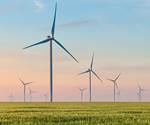Diab acquires SABIC’s ULTEM foam production line
The recyclable PEI thermoplastic foam will be incorporated into Diab’s portfolio under Divinycell U to be produced, sold and further developed.

Photo Credit: Diab.
Diab (Laholm, Sweden) has agreed to acquire the ULTEM foam production line from SABIC (Riyadh, Saudi Arabia). Diab reports that it will incorporate the ULTEM resin-based foam into its current portfolio under the name Divinycell U, and will further the development of the resin-based foam with support from SABIC.
“We are excited to broaden our portfolio with the acquisition of the ULTEM foam production line and develop the technology further,” says Diab CEO Tobias Hahn. “This will strengthen our position in the market, enabling us to offer even more fit for purpose core material.”
Divinycell U is a recyclable polyetherimide (PEI) thermoplastic foam targeted for use in aerospace applications. With intermediate densities positioned between Diab’s current F50 and F90, the company says it will now be able to provide 60 and 80 kilogram per cubic meter (kg/m3) densities, which enables potential significant weight-saving opportunities
“Diab already has an excellent product for FST [fire, smoke and toxicity] applications in Divinycell F,” says Hahn. “With Divinycell U, we can broaden our offering to the aerospace market with a product that has even better fire properties.”
“Diab is a well-recognized company offering advanced capabilities in the lightweight material space with broad access to aerospace and industrial markets and customers,” says Scott Fisher, business director, ULTEM Products and Additives, SABIC. “SABIC looks forward to collaborating with Diab to continue advancing the adoption and growth of the ULTEM resin-based Divinycell U foam.”
DIAB reports that it will relocate the acquired production line equipment to its manufacturing site in DeSoto, Texas, U.S. Beginning Q3 2021, Diab will produce and market the Divinycell U portfolio to existing and new ULTEM resin-based foam users.
Related Content
-
Plant tour: Joby Aviation, Marina, Calif., U.S.
As the advanced air mobility market begins to take shape, market leader Joby Aviation works to industrialize composites manufacturing for its first-generation, composites-intensive, all-electric air taxi.
-
JEC World 2024 highlights: Thermoplastic composites, CMC and novel processes
CW senior technical editor Ginger Gardiner discusses some of the developments and demonstrators shown at the industry’s largest composites exhibition and conference.
-
Plant tour: Sekisui Aerospace, Orange City, Iowa, Renton and Sumner, Wash., U.S.
Veteran composites sites use kaizen and innovation culture to expand thermoplastic serial production, 4.0 digitization and new technology for diversified new markets.
















